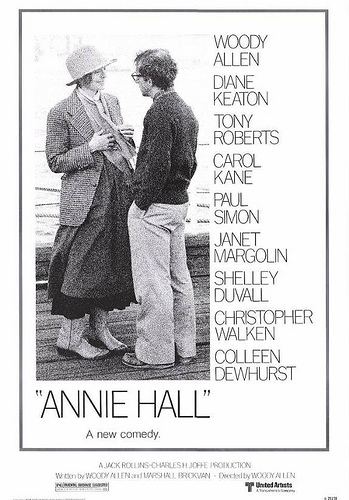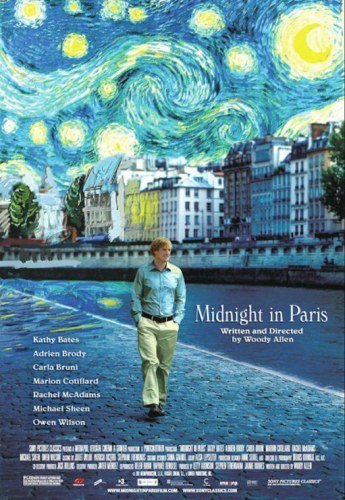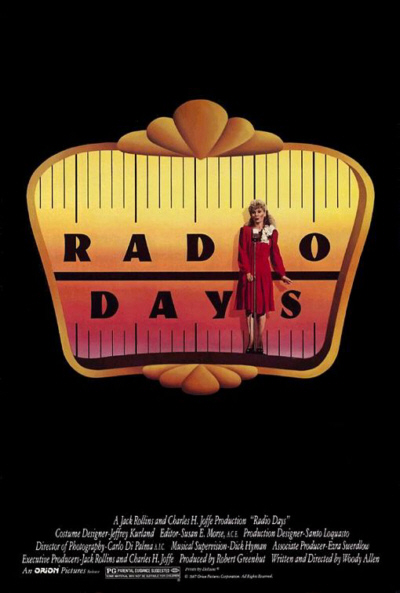
Would it have been more timely if I wrote an appreciation article of Woody Allen’s best films a month ago when “Midnight in Paris” first came out? If I had, I felt it might have been sycophant overkill since I had already gushed indefatigable admiration. Seven weeks at the box office his film still stands inside the box office top ten and is on track within days of becoming the highest grossing film that he has ever made, surpassing “Hannah and Her Sisters.” Word of mouth and staying power – why? – simply because it’s a marvelous film. It’s his best in 25 years, I think.
Update: As of July 12, 2011, “Midnight in Paris” reached the $40.2 million tally, officially overtaking 1986’s “Hannah and Her Sisters.” “Midnight” closed at $56.8 million.
Now it’s my turn to weigh in on his best of 41 films. A few years ago this article would be impertinent in face of his slump. But let’s look back in joy at what has been great and essential of his work. I am refraining from ordering my preference because then it becomes an exercise of @#!*% at why I chose a title one notch above the other and another down low when you think it should be way high yada yada yada. My Woody Allen recommendations, or top ten alphabetized… heck let’s make it a dozen:
Annie Hall (1977) – Okay, this one really is my favorite of all of his and one of my 20 favorite films of all-time. It’s a nervous romance Woody has with Diane Keaton, but the screenplay and direction has the wittiest and most wonderfully spontaneous detours, asides and insights. Woody never was satisfied with it because his original cut was more than an hour longer and was about his character’s many loves, but he cut it to concentrate more on Keaton (the original title was “Anhedonia”). Oscar winner for Best Picture, Director, Original Screenplay and Actress.

Bananas (1971) – Flat out hysterical farce. Nebbish New Yorker Woody Allen travels to a South American country to chase a girl, Louise Lasser. He unwittingly becomes a freedom fighter for the people in the resistance against an oppressed dictatorship and ends up appointed new President. Later, the United States wants him for crimes of treason. Slap yourself stupid — it’s helplessly funny.

Bullets Over Broadway (1994) – One of Woody’s most sumptuously crafted films. It’s the 1920’s and playwright John Cusack is thrilled with getting his newest work produced on Broadway but apprehensive that it is being bankrolled by gangsters. Cusack is elated nonetheless that he’s got diva Dianne Wiest for a lead role, but rankled that the gangster wants his dimbulb moll Jennifer Tilly cast in a supporting part. Best is Chazz Palminteri as the moll’s bodyguard who reveals a hidden gift for playwriting.

Crimes and Misdemeanors (1989) – Two stories of two men, similar in content of discreet guilt, divided into comedy and drama with impeccable finesse. Martin Landau is anophthalmologist with infidelity problems: he must plot against not his wife but his mistress. Woody Allen is in a doomed marriage in knowing that his wife despises him so he courts a friendship with Mia Farrow but consciously refrains from acting out his loins.

Hannah and Her Sisters (1986) – Literate comedy-drama. In a large ensemble cast that bookends with Thanksgiving holiday dinners, three sisters (Mia Farrow, Dianne Wiest, Barbara Hershey) sort through midlife changes of heart with the partners – and lifestyles – they have selected. I’m glued to Michael Caine’s work as Farrow’s husband, quite vexed, as the adulterer who falls in love with the sister played by Hershey.

Interiors (1978) – The starkest and most heart-piercing of his Ingmar Bergman-esque dramas, and only one of five movies ever to make me cry. Three grown daughters, facing relationship gallows of their own, observe their mother (Geraldine Page, heartbreaking) face a divorce beseeched by her longtime detached husband (E.G. Marshall).

Love and Death (1975) – Flat out hysterical farce but this one is on the intellectual side, taking the work of Russian lit by Tolstoy and Dostoyevsky and finding irresistible idiot humor in it. Set during the nineteenth century Napoleonic Wars, Woody Allen survives military duty and is elevated to spy and must assassinate Napolean Bonaparte along with the aid of love interest Diane Keaton.

Manhattan (1979) – The apex of first-class black & white cinematography. The uncomfortable but severely honest portraits of Woody Allen in love with Mariel Hemingway, a girl in her late teens. His ex-wife Meryl Streep is now a self-righteous lesbian, his new friend Diane Keaton is intellectually equate and appealing in more compatible terms. Brilliant comedy-drama despite the scenario perversity.

Match Point (2005) – Merciless morality tale that is complimentary to Woody’s earlier “Crimes and Misdemeanors.” Tennis pro Chris (Jonathan Rhys-Meyers) jumps aboard a social climbing opportunity by linking up with the sister of a good friend (Emily Mortimer as the girl, Matthew Goode as the good friend). His caveat is falling for struggling actress and family friend Nola (Scarlett Johansson), who vows to carry his child against his wishes. How much does luck play into our lives when sorting out our worst impulses?

Midnight in Paris (2011) – This is a screenplay that is creatively divine and thoroughly ingenious. Owen Wilson, likely to be underrated come awards season, is integral in bringing an ecstatic and sweet-natured character to the screen as Gil the screenwriter, vacationing in Paris with his shallow fiancé Rachel McAdams. It’s not just magic, it’s wily imagination, that Gil somehow gets transported back to the 1920’s after dark for several hours so he can hang – and get inspired by – the likes of Ernest Hemingway, F. Scott Fitzgerald, Luis Buñuel, Pablo Picasso, T.S Eliot and Gertrude Stein.

The Purple Rose of Cairo (1985) – The high concept was done before in Buster Keaton’s 1924 silent “Sherlock Jr.” – the greatest of all silent films – and done again atrociously in Arnold Schwarzenegger’s 1993 flick “Last Action Hero.” Movie character Tom Baxter (Jeff Daniels) literally walks off the movie screen to join the real world when smitten by movie devotee Cecilia (Mia Farrow), a New Jersey waitress trapped in an abusive marriage. Funniest paradox is when movie actor Gil Shepherd flies in from Hollywood in attempt to negotiate with his own fictional creation. Much of it is magical and imbued with Woody’s best wit.

Radio Days (1987) – Affectionate nostalgia of the Golden Age of Radio before television took over America’s family rooms. This is a glowing and beautifully reconstructed old New York City, and Woody Allen’s wisest move was to make it an episodic tour through his fictional remembrances of growing up. His “family” life parallels with the star personalities who bloomed on the airwaves. Woody flawlessly jam-packs an entire era into his film. And succeeds.

My next eight picks – to round it to an even twenty – that just miss the top list would include “Broadway Danny Rose” (1984); “Everyone Says I Love You” (1996); “Everything You Always Wanted to Know About Sex… But Were Afraid to Ask” (1972); “Husbands and Wives” (1992); “Manhattan Murder Mystery” (1993); “Mighty Aphrodite” (1995); “Sleeper” (1973); “Sweet and Lowdown” (1999).





